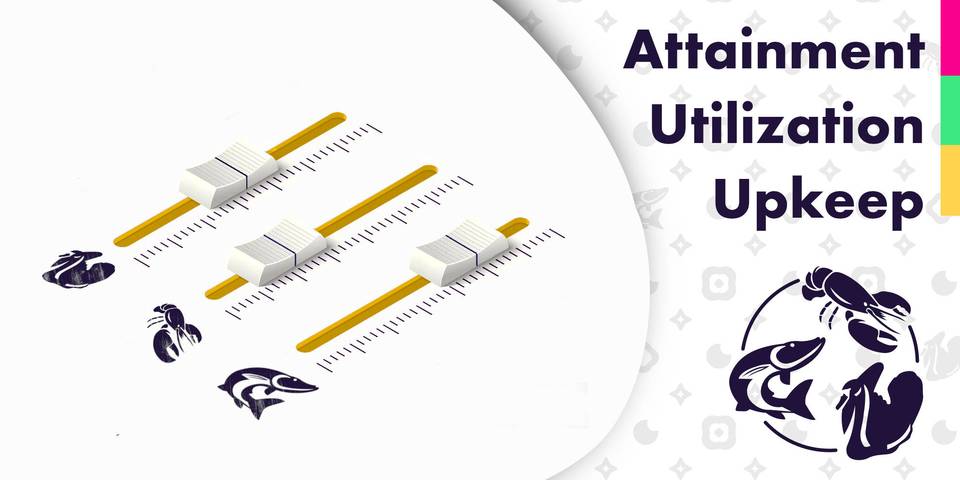Written by W. Chan Kim and Renée Mauborgne and published in 2004, the Blue Ocean Strategy puts forth a wonderful approach to test and unlock the “exceptional buyer utility” making use of The Buyer Utility Map. The map is a 6x6 matrix consisting of Six Utility Levers and Six Stages of the Buyer Experience Cycle.
I had a hunch that there is a beautiful alignment hidden somewhere in these six stages. So, I decided to test how (and whether or not) the proposed six stages of the Buyer Experience Cycle would map on the principles of alignment. It also seemed to me that the authors had designed the Buyer Utility Map mostly for physical products rather than intangible services. So I decided to test my hypothesis on the latter.
The authors suggested the ways of unlocking a “Blue Ocean” — an innovative yet highly valuable offering — providing an abundance of examples. Their case studies described success stories of large, well-known companies with hefty budgets — something that small businesses don’t have.
My goal was to: A) find an alignment (if it’s there); B) map it onto services rather than products and C) make sure it would be easy for small businesses to apply it here and now.
The authors of the book break down the Buyer Experience Cycle into six stages: Purchase, Delivery, Use, Supplements, Maintenance and Disposal. Having examined it closely multiple times, I still couldn’t shake off the feeling that the way it is described refers mostly to physical products rather than services. Today, however, and more so in the future, products are transformed into services — the service component in a product is growing.
I think semantics are important. It might be the case of personal preference but I found the following words to be more suitable to describe the Buyer Experience Cycle in relationship to services: Buy and Receive, Use and Extend, Maintain and Cancel. I’ve divided these into three groups of two on purpose — to see if the concept of alignment can be applied. The alignment part is this: Attainment (Buy & Receive), Utilization (Use & Extend) and Upkeep (Maintain & Cancel).
I might have been wrong, of course, so I decided to see what happens when these three groups are misaligned. But first, let me define what I mean with my proposed six stages.
Attainment
Can I afford this service; is it attainable when I need it?
Buy — the process of finding and paying for a service. How easy is it to find the service? Is it available here and now? Does the service provider accept cash or cards or, perhaps, other methods of payment like bitcoins? Where can I make the payment: online store, bank transfer, at their POS? Do I have to pay a lump sum or is there an instalment plan? What is the grand total including all fees, tips and taxes?
Receive — the process of obtaining a service. Is the service provided in-person or over the Internet? How do I get to the place where the service is provided? What will it cost me? How long do I have to wait? Do I have to install anything and will I be able to do it myself? Are there any pre-conditions to receiving the service?
Utilization
How valuable is it for me now and in the future; how much of a trouble it’s going to be?
Use — the process of deriving value from a service. Are there any conditions limiting the use of the service? Are there any barriers, tiers or thresholds? Am I qualified to use the service? Will it work in my circumstances? Will I have to go through tutorials or receive some sort of training? What do I have to provide the service provider with in order for it to work; can I do that?
Extend — the process of expanding the value of a service. Is this a stand-alone service or will it require add-ons and supplements? Will the vendor be able to handle the volume, complexity and timeframe demands when I need more from this service? Will they be able to upgrade or downgrade the service? Each extension usually requires customers to go through all of the six steps outlined here.
Upkeep
How much it’s going to cost me in time, effort and money to maintain the service apart from initial and monthly fees?
Maintain — the process of preserving the service. How well documented and supported is the service? Will it require tinkering on my part? How helpful and fast-to-respond the customer support is? How much it will cost to replace the service? What happens if the service fails? Are there any hidden costs apart from activation and monthly fees?
Cancel — the process of ending the use of the service. How easy it is to cancel the service? Will I have to pay for an early cancellation? Will I lose anything that I’ve accrued during this relationship with the vendor: files, documents, status, etc.?
Aligning these three groups of buyer experience probably won’t unlock a Blue Ocean for your company but it would surely help with removing barriers between your offer and your prospect customer.
One might argue that there is no experience if a prospect decides not to purchase a service. But I would insist that the experience can happen in the minds of prospects prior to the actual purchase. We can imagine how it would be like based on the information we’ve gathered about the service. The transaction will not take place if during the process of imagining the buying experience the misalignment occurs.
Examples of misalignment and alignment
So how can you tell when offerings are misaligned?
- If you can derive the value and the upkeep is low but you can’t attain the service — it’s misaligned for you.
- If you can attain the service and derive a lot of value from it but the upkeep is unbearable — it’s misaligned too.
- If the upkeep is low, you can afford and attain the service, but the utility value is equal to or lower than the upkeep — the service is misaligned for you as well.
A classic example of misalignment is Spectrum internet — easy to get, affordable and very hard to cancel. Not for me.
McKinsey Consulting can help your company with business strategy — the value of the service should be substantial, the upkeep should be close to zero (in comparison to the engagement fees), but the price tag of a million dollars is unattainable for small businesses.
Apple can help you store some of the unused files and apps on the iCloud for ten dollars a month. That’s attainable. It’s easy to cancel too. But I see little value in storing junk in the cloud that I know I’m not going to attend to. Ever. So it’s not for me.
Amazon keeps bribing me with $10 dollars so I would start using their Photo storage. Same reasoning at work — not for me.
A great example of alignment is Netflix — super easy to subscribe, very affordable, super easy to cancel at any time and super easy to re-subscribe again at any moment. Just a few clicks. Risk free. Money back. No hard feelings. Lots of value. Works. For me.
Amazon Prime is perfectly aligned with me too: attainable, easy to cancel and a ton of value.
The tricky part is this — the alignment doesn’t work for everyone. Neither it has to. Some prospects will not be able to afford your offering or cope with the upkeep or see the value in it. As a business owner, manager or key decision maker your job is to figure out who you should strive to achieve alignment of these three constituents for. In other words — who is and who isn’t your client?
As a sidenote to all of my articles on alignment — this fable by Ivan Krylov translated by yours truly:
A Swan, a Crawfish and a Pike.
When partners act without accord
Their deed will not concord.
And soon the work feels rather torment-like.
One day, a swan, a crawfish and a pike
Resolved to haul a cart with load.
Got harnessed, three of them, as one, prepared to hit the road.
Exerting ‘selves inside and out; the cart — it will not budge.
The load seems light, about right size,
But swan is rushing towards skies,
The crawfish does a backwards trudge, to waters pike pulls with a nudge.
Now, who was right and who was wrong —
‘Tis not for us to say,
But bear in mind — the cartload’s there
Until this very day.
The awezzom question of the day:
Who should we align the attainment, utilization and upkeep of our products and services for?

